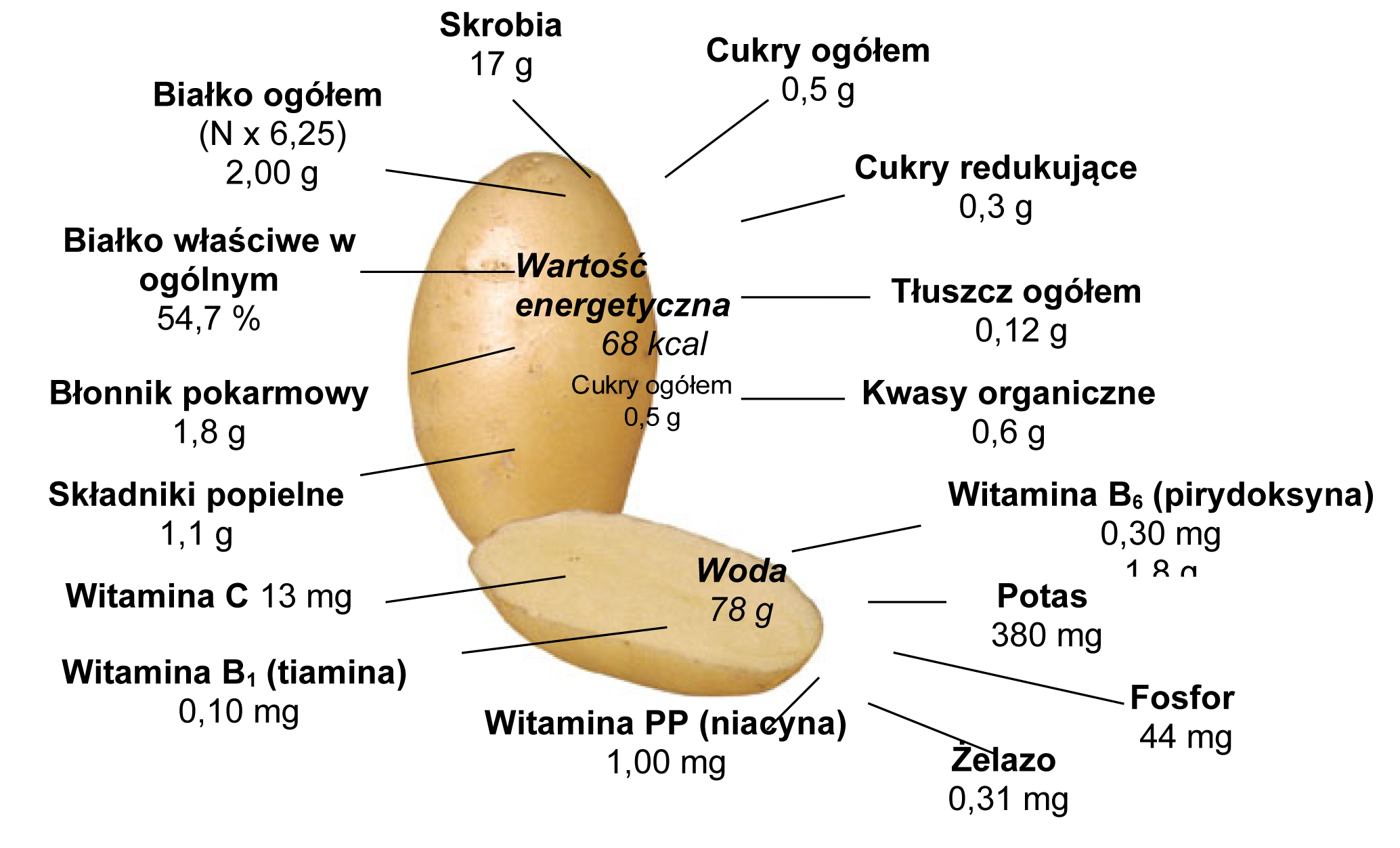Potatoes in the Fight Against Obesity

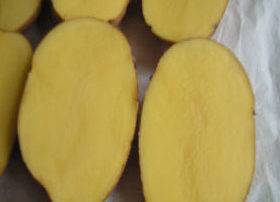
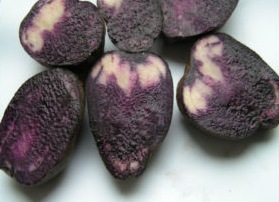
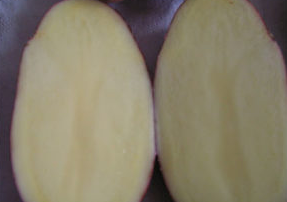
Mgr inż. Irena Stypa
IHAR – PIB, Department of Seed Science and Potato Protection in Bonin
Email: irenastypa@wp.pl
Consumers can influence the culinary quality of potatoes by being knowledgeable about the varieties, not necessarily all, but at least those in the national register. They should also have the right to choose the variety, and by exercising this right, ultimately decide which varieties should be cultivated. The Polish register includes 71 edible potato varieties, 40 Polish and 31 foreign (www.coboru.pl). The majority are medium-early varieties (110-124 days of vegetation) – 26, followed by early (96-109 days) – 22, very early (up to 95 days) – 13, medium-late (125-139 days) – 9, and 1 late variety (over 140 days). The national register also includes varieties intended for processing (17) and starch varieties (26), but the subject of this article is edible varieties.
Potatoes can be an essential part of a balanced diet and may help in the fight against obesity if chosen and prepared correctly. Understanding the variety and their specific culinary qualities can help consumers make healthier choices and enjoy the benefits of potatoes without contributing to weight gain.
Nutritional Value of Potatoes
We have long known that consuming potatoes daily, even in small amounts, provides a wealth of minerals and vitamins. Potatoes contain potassium, which increases the kidneys’ ability to excrete both sodium and water, resulting in lower blood pressure. Numerous scientific studies, including those conducted by researchers at the University of Scranton in the USA, have confirmed this effect. In one study, overweight or obese individuals with hypertension were given 6-8 baked red potatoes twice a day. After a month, the participants not only did not gain weight, but their diastolic blood pressure dropped by an average of 4.3%, and systolic pressure by 3.5%. Experts believe that common white potatoes in our region have the same effect. However, the condition is that they must be served without fat and excess salt, and without sauces or other fattening additives. Recently, scientists at the British Institute of Food Research in Norwich discovered that potatoes also contain other compounds that lower blood pressure – kukoamines.
Daily consumption of 200 grams of potatoes (two medium tubers) meets 30% of the daily requirement for potassium, 80% for molybdenum, 50% for chromium, and up to 20% for iodine, fluoride, selenium, magnesium, iron, copper, and phosphorus. Although the vitamin C content is relatively low, daily consumption can meet up to two-thirds of the body’s requirement. In Poland, the vitamin C content in potato tubers is an important selection factor in breeding new edible varieties. However, the declining consumption of potatoes seems to contradict these findings and confirms the opposite correlation with the increase in obese individuals in society. Potatoes have gained a bad reputation due to the additions with which they are often served – excessive amounts of fat, heavy sauces, or breaded cutlets. Meanwhile, potatoes themselves contain almost no fat (about 0.1%), are low in calories (50-80 kcal per 100 grams depending on starch content).
One of the valuable components of potatoes is starch – a complex carbohydrate that breaks down into glucose in the body, necessary for the proper functioning of all cells. Glucose provides a large dose of energy and keeps us feeling full for a long time. Edible potato varieties have significantly lower starch content compared to potatoes intended for starch production. Recent research published in the journal “Molecular Nutrition & Food Research” (www.naukawpolsce.pap.pl) reports that potatoes are an excellent weapon in the fight against obesity. Potato extract containing a high concentration of polyphenols, compounds with antioxidant properties, helps limit weight gain and reduce the risk of type 2 diabetes, according to studies conducted on mice by scientists at McGill University in Canada. During their experiment, they fed mice a high-fat, high-carbohydrate diet for 10 weeks, which caused weight gain. The mice quickly gained 16 grams. In the case of mice that consumed the same food but with the addition of potato extract, the weight gain was only 7 grams, stated Stan Kubow, the study’s lead author. The scientists plan to continue their research to test the effectiveness of the extract in fighting obesity in humans and determine the dose that would yield results similar to those observed in mice (PAP).
Our researchers (Zarzecka et al. 2013) had previously found that potatoes contain not only polyphenols but also other compounds with beneficial effects on health, such as flavonoids and carotenoids. However, polyphenols are the most significant and most abundant. Potatoes accumulate minimal amounts of heavy metals or pesticide residues from the soil, and thanks to their antioxidant content, they can protect us from the negative effects of absorbing almost omnipresent heavy metals in food (Leszczynski 2012). For people with stomach problems, easily digestible potatoes can help alleviate constipation and restore an alkaline reaction in the stomach, eliminating heartburn. The nutritional value and biological quality of substances in potato tubers are illustrated in Figure 1.
Culinary Quality of Potatoes
The most important characteristics determining the consumption value of potatoes are undoubtedly good taste and culinary qualities. The overall sensory experience when consuming potatoes includes their inherent taste without any off-flavors or odors, and the texture of fresh potatoes after cooking, which is largely influenced by their dry matter content. There is a strong correlation between disintegration during cooking, mealiness, and starch content.
Culinary Types Based on Texture and Starch Content:
- Type A and AB (Firm, Waxy)
- Characteristics: These potatoes have a firm consistency, delicate structure, and do not disintegrate when cooked.
- Uses: Ideal for soups, salads, and casseroles.
- Starch Content: Low starch content.
- Examples: Varieties in this type are less common in the national register.
- Type B (All-Purpose)
- Characteristics: These potatoes have a fairly firm consistency, slightly mealy, slightly moist, and have a low tendency to disintegrate.
- Uses: Suitable for direct consumption as a side dish, boiled, steamed, or baked in their skins, either whole or halved with other vegetables.
- Starch Content: Moderate starch content.
- Examples: Most varieties in the national register fall into this versatile category.
- Type C (Mealy, Floury)
- Characteristics: These potatoes have a high starch content and a slightly rough texture. They are mealy and crumbly when cooked.
- Uses: Best for making natural puree, potato pancakes, dumplings, and pyzy (Polish potato dumplings).
- Starch Content: High starch content.
- Examples: Varieties in this type are used for specific culinary applications.
- Type D (Disintegrating)
- Characteristics: These potatoes disintegrate easily when cooked and are not typically found among edible varieties.
- Uses: Limited direct consumption.
- Starch Content: Very high starch content.
- Examples: Generally not present in the edible potato register.
Additional Culinary Quality Factors:
- Darkening of Raw and Cooked Tubers:
- Raw Tubers: Enzymatic darkening depends largely on cultivation, harvesting, and storage conditions. High temperatures and abundant rainfall during the growing season increase darkening.
- Cooked Tubers: Darkening is a chemical reaction between iron and diphenyl compounds. The ratio of chlorogenic acid to citric acid is crucial, as these acids can bind with iron to limit darkening. There is also a correlation between darkening after cooking and the nitrogen and potassium content of the tubers. Tubers grown with excess nitrogen or potassium deficiency show increased darkening both raw and cooked. Proper storage conditions (appropriate temperature and relative humidity) can reduce this darkening (Nowacki 2014).
- Flesh Color:
- Influence: Slightly influenced by environmental conditions.
- Correlation: Positive correlation with the content of carotenoids and xanthophylls, compounds with antioxidant properties that are highly desirable in the human diet.
- Range: White-fleshed varieties contain 50-100 µg of carotenoids per 100 grams of fresh weight, while yellow-fleshed varieties contain 100-350 µg per 100 grams.
Potatoes are versatile in the kitchen and can contribute significantly to a healthy diet when prepared correctly and without excessive fat or salt. Understanding the different types and their culinary applications can help consumers make better choices and enjoy the nutritional benefits of potatoes.
Characteristics of Culinary and Utilization Types of Potatoes
| Culinary Type | Disintegration | Consistency | Mealiness | Moisture | Starch Grain Structure |
|---|---|---|---|---|---|
| A – Salad | Surface unchanged | Firm | Not mealy | Moist | Delicate |
| B – All-Purpose | Surface slightly cracked | Fairly firm | Slightly mealy | Slightly moist | Fairly delicate |
| C – Mealy | Surface moderately cracked | Fairly soft | Mealy | Slightly dry | Slightly rough |
| D – Very Mealy | Surface disintegrated | Soft | Very mealy | Dry | Rough |
Type A (Firm, Waxy)
- Disintegration: Surface unchanged
- Consistency: Firm
- Mealiness: Not mealy
- Moisture: Moist
- Starch Grain Structure: Delicate
- Uses: Ideal for salads, soups, and casseroles
Type B (All-Purpose)
- Disintegration: Surface slightly cracked
- Consistency: Fairly firm
- Mealiness: Slightly mealy
- Moisture: Slightly moist
- Starch Grain Structure: Fairly delicate
- Uses: Suitable for direct consumption, boiled, steamed, or baked
Type C (Mealy, Floury)
- Disintegration: Surface moderately cracked
- Consistency: Fairly soft
- Mealiness: Mealy
- Moisture: Slightly dry
- Starch Grain Structure: Slightly rough
- Uses: Best for making natural puree, potato pancakes, dumplings, and pyzy (Polish potato dumplings)
Type D (Very Mealy)
- Disintegration: Surface disintegrated
- Consistency: Soft
- Mealiness: Very mealy
- Moisture: Dry
- Starch Grain Structure: Rough
- Uses: Limited direct consumption, mostly used for specific culinary applications where a mealy texture is desired
Aesthetic Quality – External Appearance of Tubers


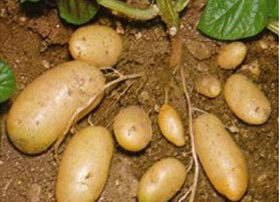
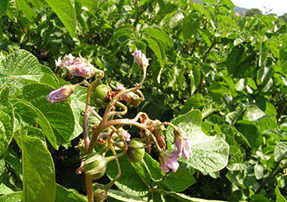
Potato Varieties
Explanations for Table 2:
- Evaluation of Varieties and Characteristics: Scale of 9-1, where 9 represents the best value, 5.5 – average value, 1 – the worst.
- N: Variety resistant to potato cyst nematode Ro1.
- Pa: Variety resistant to the aggressive strain of nematode.
- B: Resistant to aggressive biotypes of potato wart.
- Year of Registration: For foreign varieties, the year of registration in Poland is given.
- Commercial Yield: (Tubers with a diameter above 40 mm, for very early harvest above 30 mm) – estimated based on the results of IHAR and COBORU experiments from 2007-2014.
- Shape of Tubers: o – round, oow – round-oval, ow – oval, owp – oval-long, p – long.
- Shape Regularity: 9 – ideal (almost complete uniformity of shape); 8 – very good (dominance of one shape type, stolon or apex indentation up to 1 mm deep); 7 – good (dominance of one or two adjacent shape types, one indentation up to 2 mm deep, and the other up to 1.5 mm); 6 – fairly good (various shape types, one indentation up to 2.5 mm deep, the other up to 1.5 mm).
- Size of Tubers: Scale 9-1, where 9 represents very large tubers; 7 – medium-large, with a diameter of 10 cm and a weight of 150-200 grams.
- Eye Depth: 9 – very shallow, not noticeable to the touch; 8 – very shallow, up to 1 mm; 7 – shallow (1.1 – 1.5 mm); 6 – medium shallow, requiring minor corrections after mechanical peeling (1.6 – 2.5 mm), up to 3.0 mm for large tubers.
- Flesh Color: ż – yellow, jż – light yellow, b – white, kr – cream.
- Skin Color: Varieties Bellarosa, Cecile, Oberon, Rosalind, Roko – red; Irga – pink, other varieties – yellow skin.
- Taste: Scale 9-1, where 7.5 – 8 indicates very good taste; 7 – good taste; 6.5 – fairly good taste.
- Raw Flesh Darkening: After 4 hours.
- Cooked Flesh Darkening: Average ratings after 10 minutes and 24 hours.
- Consumption Type: AB – firm (salad type), B – slightly firm, BC – slightly mealy, C – mealy.
- Soil and Water Requirements: (m.-śr) – small to medium, (śr-d) – medium to large, tol. – tolerant.
- Utility: J – edible, F – suitable for French fries production, Cz – chips, S – food powders, K – canned, salads, and frozen products.
- Disease and Pest Resistance: 9 – extremely resistant, 8 – very resistant, 7 – resistant, 6 – fairly resistant, 5 – moderately resistant, 4 – fairly susceptible, 3 – susceptible, 2 – very susceptible.
- Seed Production Difficulty: ł – easy, dł – fairly easy, śrtr – moderately difficult, tr – difficult.
- x: Indicates preliminary assessment (studies in progress).
- –: Maximum yield fertilizer application with full manure or plowed green manure for soils with regulated acidity; increase doses by 30-50 kg N/ha when irrigated; for early harvest of early varieties, apply doses of 50-80 kg N/ha; use the lower dose limits on light soils.
Literature
- Leszczyński W. (2012). Nutritional value of potatoes and potato products (Literature review). – Biul. IHAR-PIB 266: 5-20.
- Nowacki W. (ed.) (2014). Characteristics of the National Register of Potato Varieties. IHAR-PIB, Jadwisin.
- Online resource: COBORU
- Stypa I., Chotkowski J. (2012). Criteria for selecting potato varieties for production and use. In: Production and market of potatoes, Wieś Jutra 2012: 89-100.
- Zarzecka K., Gugała M., Zarzecka M. (2013). Potatoes as a good source of nutrients. – Post. Fitoterapii 3: 191-194.
- Service: Nauka w Polsce

